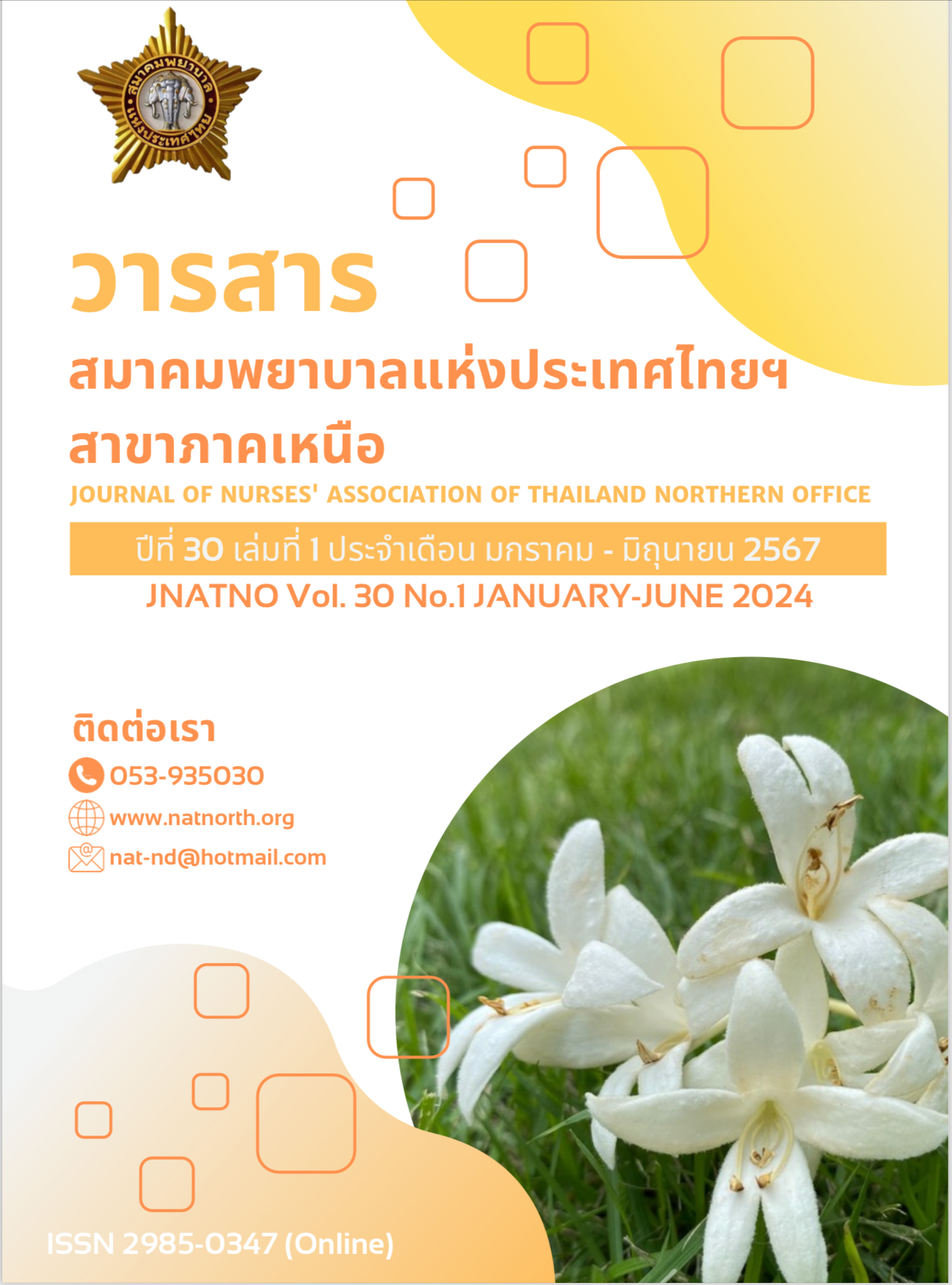Health Literacy and COVID-19 Preventive Behaviors Among Undergraduate Students at Payap University
Keywords:
Health Literacy, Prevention behaviors, COVID-19Abstract
This survey research aimed to investigate the relationships between health literacy on COVID-19 and the preventive behaviors of undergraduate students at Payap University, Chiang Mai Province, using Nutbeam's health literacy framework. The sample consisted of 175 first-year undergraduate students selected using Krejcie & Morgan's sample size estimation table and stratified random sampling to ensure equal representation from each faculty. Data were collected using an online questionnaire via Google Forms and analyzed using descriptive statistics and Pearson's correlation.
The results revealed that most students had moderate overall COVID-19 health literacy, with moderate levels of access to information, knowledge and understanding of preventive measures, and media literacy. Self-management and decision-making skills were low. Preventive behaviors were also moderate, with low levels of protective behaviors within families and close contacts. Health literacy had a significant positive correlation with preventive behaviors (r=.615, p<0.001).
Therefore, educational institutions should use these findings to incorporate content on COVID-19 prevention and emerging infectious diseases into their curricula for students, emphasizing accurate information, reliable sources, and critical thinking. Decision-making and self-management skills should also be emphasized.
References
กรมควบคุมโรค กระทรวงสาธารณสุข. สถานการณ์ไวรัสโควิด-19 ในประเทศไทย [อินเทอร์เน็ต]. 2564 [เข้าถึงเมื่อ 1 สิงหาคม 2564]. เข้าถึงได้จาก: https://ddc.moph.go.th/viralpneumonia/.
สำนักงานพัฒนานโยบายสุขภาพระหว่างประเทศ (IHPP) กองโรคไม่ติดต่อ กรมควบคุมโรค. รายงานผลการทบทวนผลกระทบเชิงเศรษฐกิจและสังคมจากการระบาดของโรคโควิด-19 ในระดับโลก และในประเทศไทย [อินเทอร์เน็ต]. 2564 [เข้าถึงเมื่อ 1 กันยายน 2564]. เข้าถึงได้จาก: https://ddc.moph.go.th/uploads/publish/1177420210915075055.pdf.
กรมควบคุมโรค กระทรวงสาธารณสุข. แนวปฏิบัติสำหรับบุคลากรทางการแพทย์ที่สัมผัสกับผู้ป่วยยืนยันโรคโควิด-19 [อินเทอร์เน็ต]. 2564 [เข้าถึงเมื่อ 1 กันยายน 2564]. เข้าถึงได้จาก: https://ddc.moph.go.th/vaccine-covid19/getFiles/13/1621840826851.pdf.
สำนักงานสถิติแห่งชาติ กระทรวงดิจิทัลเพื่อเศรษฐกิจและสังคม. การสำรวจการมีการใชเทคโนโลยีสารสนเทศและการสื่อสารในครัวเรือน พ.ศ. 2563 [อินเทอร์เน็ต]. 2564 [เข้าถึงเมื่อ 1 กันยายน 2564]. เข้าถึงได้จาก: https://catalogapi.nso.go.th/api/doc/ICTH_7_20.pdf.
ชญานิศ ลือวานิช, เอมอร นาคหลง, ประไพพิมพ์ สุรเชษฐคมสัน, พรทิพย์ งานสกุล, ศุภิกา วงศ์อุทัย, อารยา ข้อค้า, และคณะ. ความรู้ การรับรู้ และการปฏิบัติตัวเพื่อป้องกันโรคติดเชื้อไวรัสโคโรนา 2019 ของนักศึกษามหาวิทยาลัยราชภัฏภูเก็ต. วารสารวิจัยและพัฒนาด้านสุขภาพ สำนักงานสาธารณสุขจังหวัดนครราชสีมา. 2564;7(1):60-74.
ขวัญเมือง แก้วดำเกิง. ความรอบรู้ด้านสุขภาพ: กระบวนการ ปฏิบัติการ เครื่องมือประเมิน. กรุงเทพฯ: ศูนย์หนังสือจุฬาลงกรณ์มหาวิทยาลัย; 2564.
Nutbeam D. The evolving concept of health literacy. Social science & medicine. 2008;67(12):2072-78.
Seng JJB, Yeam CT, Huang CW, Tan NC, Low LL. Pandemic-related health literacy: a systematic review of literature in COVID-19, SARS and MERS pandemics. Singapore Medical Journal [Internet]. [cited 2024 Feb 29]. Available from: https://journals.lww.com/smj/Abstract/9000/Pandemic_related_health_literacy__a_systematic.99893.aspx.
ขจรศักดิ์ บัวระพันธ์. การประเมินทักษะแห่งศตวรรษที่ 21. จุลสารนวัตกรรมสถาบันนวัตกรรมการเรียนรู้ มหาวิทยาลัยมหิดล. 2555;7:4-9.
Patil U, Kostareva U, Hadley M, Manganello JA, Okan O, Dadaczynski, K, et al. Health Literacy, Digital Health Literacy, and COVID-19 Pandemic Attitudes and Behaviors in U.S. College Students: Implications for Interventions. Inter J of Environ Res Public Health. 2021;18(6):1-14.
Sevinc N, Korkut B. Low COVID-19-related practice increases the risk of poor health literacy in international students. Univ Med. 2021;40(2):79-89.
Li S, Cui G, Kaminga AC, Cheng S, Xu H. Associations between health literacy, eHealth literacy, and COVID-19-related health behaviors among Chinese college students: Cross-sectional online study. J Med Internet Res. 2021;23(5):e25600.
ปาจรา โพธิหัง. ความสัมพันธ์ระหว่างความรอบรู้ด้านสุขภาพ กับพฤติกรรมสร้างเสริมสุขภาพและป้องกันโรคในประเทศไทย: การทบทวนวรรณกรรมอย่างเป็นระบบ. วารสารคณะพยาบาลศาสตร์ มหาวิทยาลัยบูรพา. 2564;29(3):115-30.
Krejcie, RV, & Morgan DW. Determining sample size for research activities. Educ Psychol Meas. 1970;30(3):607-10.
รัตน์ศิริ ทาโต. การวิจัยทางพยาบาลศาสตร์:แนวคิดสู่การประยุกต์ใช้ (ฉบับปรับปรุง) (พิมพ์ครั้งที่ 3). กรุงเทพฯ: โรงพิมพ์แห่งจุฬาลงกรณ์มหาวิทยาลัย; 2561.
สำนักสื่อสารความเสี่ยงและพัฒนาพฤติกรรมสุขภาพ. คู่มือกระบวนการสร้างความรอบรู้ด้านสุขภาพในการป้องกันควบคุมโรคและภัยสุขภาพ. กรุงเทพฯ: บริษัท อาร์ เอ็น พี พี วอเทอร์ จำกัด; 2564.
Wiersma W, Jurs GS. Research Method in Education an Introduction. 9th ed. Massachusetts: Pearson; 2009.
สำนักสนับสนุนสุขภาวะเด็ก เยาวชนและครอบครัว สำนักงานกองทุนสนับสนุนการสร้างเสริมสุขภาพ[ออนไลน์]. แนะครอบครัวปรับตัว-ตั้งกติกา ใช้ชีวิตวิถีใหม่ ในภาวะโควิด-19. 2563. [เข้าถึงเมื่อ 2564/8/1]. เข้าถึงได้จาก: https://cmu.to/pUGfc.
ปราณี ภาโสม. (2564). ความรอบรู้ด้านสุขภาพและพฤติกรรมการป้องกันโรคติดเชื้อไวรัสโคโรนา 2019 ของผู้มารับบริการคลินิกผู้ป่วยนอก โรงพยาบาลสกลนคร. กลุ่มงานสุขศึกษา โรงพยาบาลสกลนคร [อินเทอร์เน็ต]. [เข้าถึงเมื่อ 2567/4/2]. เข้าถึงได้จาก: https://cmu.to/VnFTa.
Downloads
Published
How to Cite
Issue
Section
License
Copyright (c) 2024 Nurse' Association of Thailand Northern Office

This work is licensed under a Creative Commons Attribution-NonCommercial-NoDerivatives 4.0 International License.
บทความที่ได้รับการตีพิมพ์เป็นลิขสิทธิ์ของสมาคมพยาบาลแห่งประเทศไทยฯ สาขาภาคเหนือ
เนื้อหาและข้อคิดเห็นใดๆ ที่ตีพิมพ์ในวารสารสมาคมพยาบาลฯ ถือเป็นความรับผิดชอบของผู้เขียนเท่านั้น ผู้เขียนบทความต้องศึกษารายละเอียดหลักเกณฑ์การจัดทำต้นฉบับตามที่วารสารกำหนด และเนื้อหาส่วนภาษาอังกฤษต้องได้รับการตรวจสอบจากเจ้าของภาษามาแล้ว


